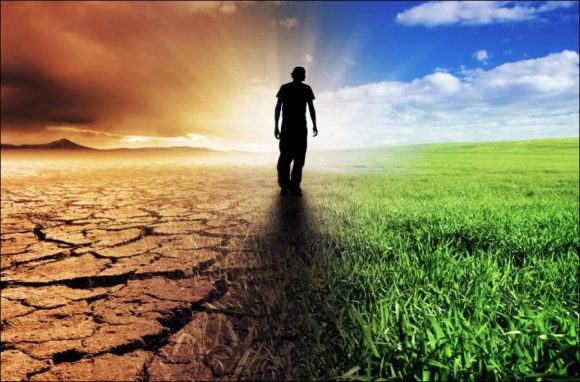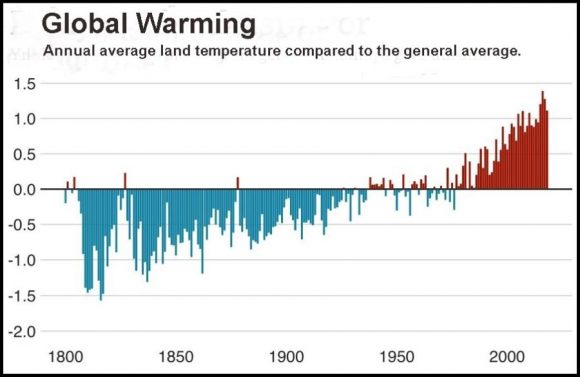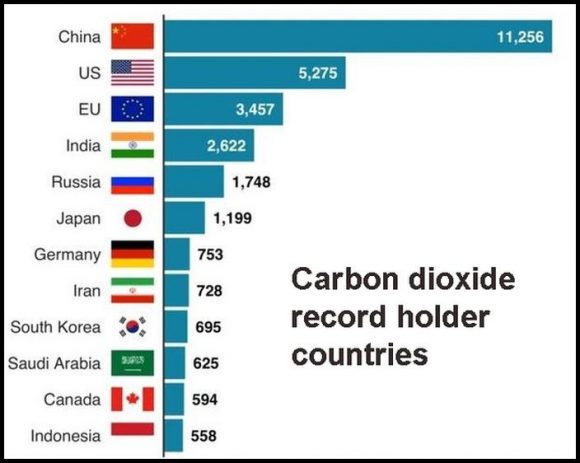Scientists warn that global warming is beginning to have disastrous effects on the world. Finally, this week, the World Meteorological Organization announced that the 10 years ending as of the end of 2019 have been recorded as the hottest 10 years in the world history.
In addition, 2019 was the second hottest year measured from 1850 on calculations using data from the National Department of Aeronautics and Space (NASA), the US Department of Ocean and Atmosphere (NOAA), and the British Meteorological Service.
Due to the activities of people, carbon dioxide emissions increased, which raised the temperatures. Possible consequences include unusual climate events and melting ice at the poles.
What is climate change?
The average temperature in the world is about 15 degrees. However, there have been periods in the past when the average temperature exceeded or remained far below this. It is very natural to have such ups and downs in the climate. However, scientists say that temperatures are now increasing much faster than in previous periods.
The factor behind this is the greenhouse gas effect, which describes how the atmosphere traps part of the energy from the sun. Solar energy reflected from the surface of the earth into space is absorbed before it reaches the space due to greenhouse gas and it spreads in all directions from there.
This causes both the lower layers of the atmosphere and the earth’s surface to heat up. If there was no greenhouse gas effect, the world would be about 30 degrees cooler and would not be able to offer a favorable environment for life.
Scientists say that the gases produced by industrial and agricultural activities keep more energy in the world, causing the temperatures to rise and the natural greenhouse gas effect to be felt more. This situation is defined as climate change or global warming.
What is greenhouse gas?
Greenhouse gas, water vapor, which affects heating the most. However, the residence time of the water vapor in the atmosphere is limited to only a few days. However, carbon dioxide (CO2) is much more permanent. It takes a few hundred years before the current amount is absorbed by natural reservoirs, such as the oceans, to return to pre-industrial levels.
Most of the CO2 emissions from man come from the use of fossil fuels. As carbon-absorbing forests are cut, rotted or burnt, the carbon they hold is exposed, leading to increased global warming. Since the 1750s, when the Industrial Revolution happened, CO2 levels have increased by more than 30 percent. It is calculated that the CO2 accumulation in the atmosphere is at the highest level that it has reached for at least 800 thousand years.
Other greenhouse gases, such as methane gas and nitrous oxide, are also produced by human activities, but their amount is not as high as carbon dioxide.
Any evidence that the world is warming?
The World Meteorological Organization announced that its average temperature in 2019 was 1.1 degrees higher than the pre-industrial period. While all 20 of the hottest years recorded have been experienced in the last 22 years, the years between 2015 and 2018 took the first four places. Worldwide, the average seawater height increased by 3.6 millimeters per year between 2005 and 2015.
The main factor behind this increase is the increase in the water level along with the heating. However, recently it has been thought that the melting glaciers at the poles are the main reason for the increase of sea water height. It is seen that many ice floes started to shrink with the warming of the weather.
In addition, the data obtained from the satellite indicates that the sea ice in the Arctic region has decreased significantly since 1979. In recent years, the melting in Greenland Ice Sheet has reached record levels.
According to satellite data, the Western Antarctic Ice Sheet is also shrinking. A recent study found that shrinkage has started in East Antarctica. Changes in the climate began to affect vegetation and land animals. It is seen that the plants bloom earlier than they should be, the time for the fruit of the plants to change and the areas where the animals live also change.
How much more will the temperatures increase in the future?
Many calculations indicate that the change in world surface temperature is likely to exceed 1.5 degrees in the period between 1850 and the end of the 21st century.
The World Meteorological Organization says that if the current warming trend continues, temperatures will rise 3 to 5 degrees at the end of this century. For a long time, warnings have been made that increasing temperatures by 2 degrees will be a sign that warming has reached dangerous levels. Scientists and policy makers argue that keeping the temperature rise at 1.5 degrees will reduce danger.
In the report published by the Intergovernmental Panel on Climate Change (IPCC) in 2018, it was stated that “fast, claims and unprecedented changes should be made in all areas of the society” in order to meet the 1.5 degree warming target. The United Nations is leading political efforts to keep greenhouse gas emissions at a certain level. China is the country that emits the most CO2 in the world.
China and the USA and the European Union (EU) members follow. However, the greenhouse gas emission per capita in the EU is much higher compared to other countries. However, scientists say their impact will continue even if very serious cuts in greenhouse gas emissions are made. Large water and ice bodies can take many years to react to changes in temperature. Moreover, it can take 10 years to remove CO2 from the atmosphere.
How will climate change affect us?
It cannot be estimated how big the impacts of climate change will be. It can lead to a decrease in fresh water resources, difficulties in growing foodstuffs and increased casualties due to floods, storms and hot air waves.
Climate change is expected to increase the frequency of unusual climate events. But reconciling a particular unusual climate phenomenon with climate change is a bit more complicated. As the world warms, more water evaporates, leading to an increase in the amount of moisture in the air. This means that some regions will get more heavy rain, and in some places more snow will be seen.
However, in the hot summer months, the risk of drought may increase, especially in areas far from the sea. More floods and flooding cases are expected to rise due to the storm and rising sea level. However, all these expectations are expected to differ by region.
It is believed that poor countries, which have limited resources to combat the rapid changes, will feel the negative effects of climate change more. It is anticipated that some species of plants and animals will disappear as natural habitats change faster than living species adapt. The World Health Organization warns that factors such as malaria, water contamination and malnutrition can threaten the health of millions of people.
As the amount of CO2 released into the atmosphere increases, the amount of gas absorbed by the oceans increases, which causes the waters to become more acidic. This is a situation that can create very serious negative effects on coral reefs.
As a result of global warming, there will be other changes that will increase the temperature. These include the melting of a very high amount of methane gas by melting the permafrost, which is located in high regions. Combating climate change is one of the biggest challenges facing humanity this century.
Visits: 89






